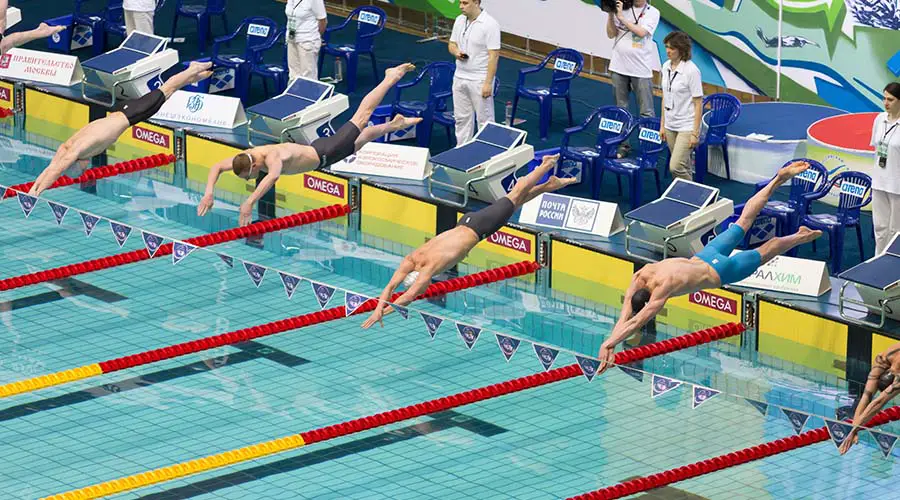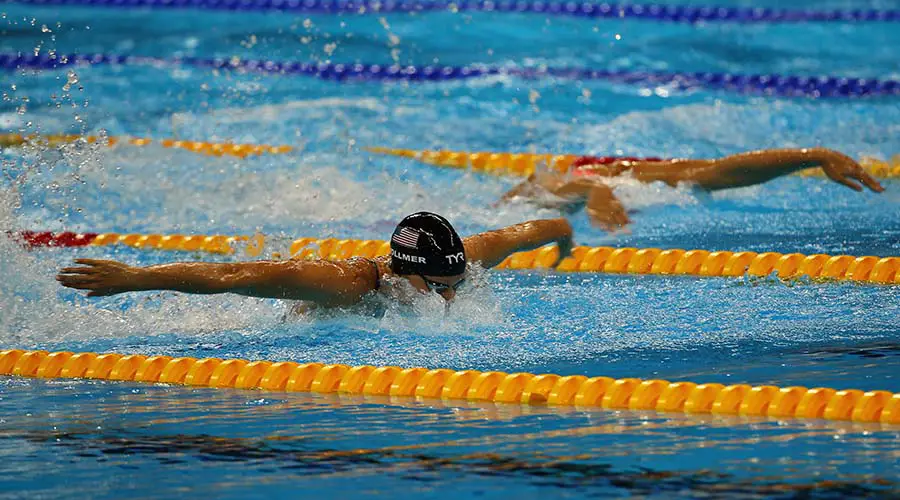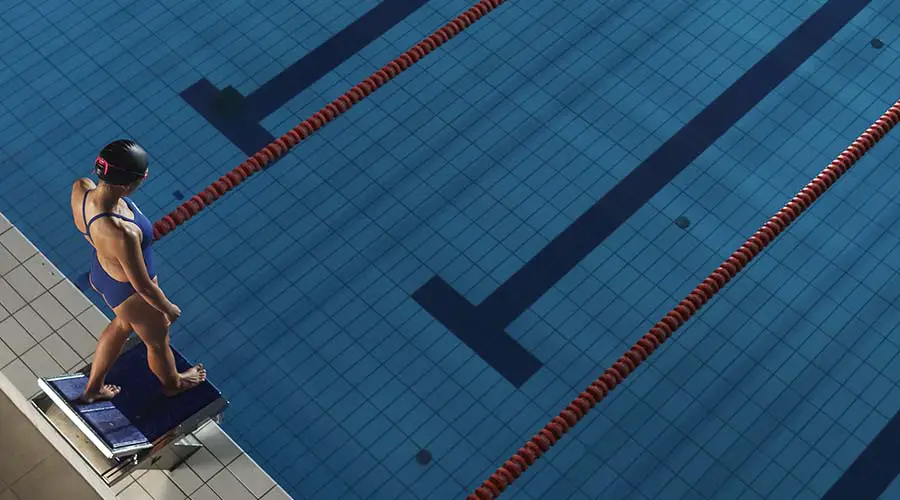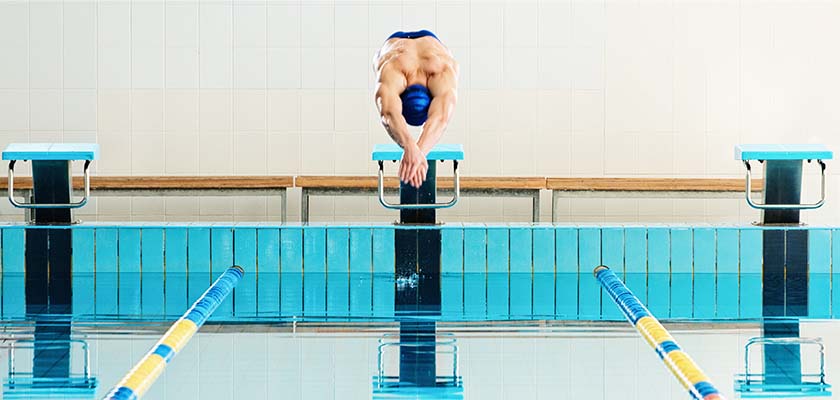One of the most popular water sports is undoubtedly swimming. Swimming, which today is also a much-loved Olympic attraction, requires a lot of training, willingness and breath from its athletes.
For a competition to go very well, there are a few swimming rules to follow. These range from swimming styles and starting positions before diving to the size of the pools used.
So let’s take a look at the rules of swimming, shall we? Get ready to dive into this world and be enchanted by the sport.
Check it out 👇
Swimming: a brief history of the sport

Swimming is a well-known sport all over the world, and before it existed in its more modern form it was already practiced by our ancestors. The first records of the sport date back more than five thousand years.
The sport began to be practiced at the Olympic Games in 1896 in Athens, and the main swimming styles were breaststroke, crawl and English side stroke. In the first three editions of the Olympics, the competitions were held in the open sea, but everything changed in 1908 with the use of swimming pools.
In Brazil, swimming originated with the indigenous peoples, who needed to escape from animals by water. But it wasn’t until 1916 that the sport began to be practiced as a sport and was regulated by the CBD (Brazilian Sports Confederation). The first swimming pools were built in 1919.
Now it’s finally time to learn about the rules of swimming and other interesting facts about the sport.
Swimming rules: swimming styles
In competitions, the swimming rules cover the following types of swimming:
- Crawl stroke;
- Backstroke;
- Breaststroke;
- Butterfly stroke.
Crawl: also known as freestyle, the crawl is the simplest type of swimming. In it, the swimmer positions themselves with the front of their body facing the bottom of the pool.
It’s important to keep the arms outstretched, making alternating movements that pull the water back, bringing the body forward. The legs should be stretched out.

During the swim, the athlete can breathe when they turn their head to the side of the arm that is pulling the water. The air must be inhaled through the mouth.
Backstroke: in the backstroke, the swimmer needs to keep the back of their body facing the bottom of the pool, leaving their abdomen out of the water. The movement of the arms will rotate the water, propelling the body forward.
The arms pass a short distance from the ear and the palm of the hand should always face out of the pool. The feet and legs move in a similar way to the crawl.
Breaststroke: the breaststroke is more complex than the crawl and backstroke, mainly because it is a slower movement and requires a lot of skill. In the breaststroke, the swimmer moves with their arms outstretched, palms facing outwards, leaving their face in the water.
When doing the breaststroke, the athlete keeps their knees bent and open, spreading their feet apart and extending their legs to catch momentum. The arms make circular movements in the water, and at the end of each stroke the swimmer can raise their head to breathe through their mouth.
Butterfly stroke: The butterfly stroke is the most difficult to perform, as it requires a lot of physical preparation, strength, endurance and flexibility.
With the belly facing the bottom of the pool, the legs are together and stretched out, moving in undulations. The arms are also brought in front of the body at the same time.
Swimming rules: distances
Now that you know the types of stroke, it’s important to understand that each swimming discipline has different distance rules, among other details to be followed during the competition.
Let’s take a look at each of these swimming rules:
Crawl or freestyle swimming: 50, 100, 200, 400, 800 and 1500 meters. In this case, the 800-meter race is exclusively for women, and the 1500-meter race is only for men;
Backstroke: 50 (non-Olympic), 100 and 200 meters. To turn, the swimmer must place both hands against the pool wall;
Breaststroke: 50 (non-Olympic), 100 and 200 meters;
Butterfly: 50 (non-Olympic), 100 and 200 meters. At both the turn and the finish, the athlete must touch the pool wall with both hands simultaneously, regardless of whether they are below, above or on the surface of the water.
Swimming rules: pool and clothing

The rules of swimming also cover the size of the pools and the space occupied in them, as well as the appropriate clothing for practicing the sport. According to the sport’s official rules, swimming pools must be of the Olympic type, with an area of 50 meters long by 25 meters wide, as well as three meters deep.
As far as clothing is concerned, the rules of swimming require women to wear swimsuits made only of polyester, which extend from the shoulder to the knee. Men, on the other hand, must wear shorts that go from their thighs to their knees.
Swimmers also need to wear goggles to protect their eyes from the water in swimming pools, which is treated with chlorine. Without the necessary care, they are susceptible to infection by germs and other irritations.
To protect their hair and speed up the movement of their bodies while swimming, athletes need to wear silicone caps. There is a whole list of suggested models for swimmers, who can choose from the most comfortable ones.
Swimming is a sport that is much more than just fun, it’s also very beneficial for your health. It helps improve motor coordination, stimulates metabolism, improves blood circulation and develops endurance, strength and flexibility.
By following all the rules of swimming, the sport becomes safe and much more than a leisure activity. Did you like learning about the main rules of swimming? Keep browsing the site to learn much more about this and other sports!



